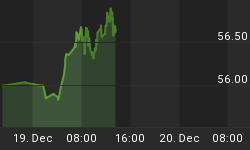With the rising yield of the 10-year Treasury note spooking the markets, it may be worth a historical look vs. the S&P 500. The chart (1962-2007) does show several periods where spikes in the 10-year yield coincided with corrections in the S&P 500 (see the thin black vertical lines). However, the vast majority of the 1982-2000 bull market in U.S. stocks took place during a period where the yield on the 10-year was higher than present level of 5.22% (see green box).
The thick trend lines on the 10-year yield show the long-term take away from the chart. Many have noted that the recent spike in yields broke a 10-year downtrend, which is of long-term importance. However, a 26-year downtrend was broken in 2005 (see red circles) and stocks have done quite well since then.

Envelope Favors Bulls
The trailing PE on the S&P 500 in March of 2000 was 25.5. A quick back of the envelope calculation gives you a March 2000 S&P 500 earnings yield of 3.92%. The 10-year was yielding 6.28% on March 15, 2000. Therefore, the spread was 2.36% in favor of the 10-year Treasury.
As of May 30, 2007, the trailing PE on the S&P 500 was 17.1. The back of the envelope gives us an earnings yield of 5.84%. Therefore, the spread is 0.62% in favor of the S&P 500.
To give us an idea of how crazy inflated markets can get, let's assume the following:
-
The yield on the 10-year rises to 6.0%
-
Earnings on the S&P 500 stay constant
-
We wish to produce the same spread of 2.36% in favor of the 10-year that was present in March of 2000.
The earnings yield on the S&P 500 would have to be 3.64% (6.0% - 2.36%), which implies a PE of 27.47. Under the assumptions, the S&P 500 would have to rise 60% (increase from 17.1 to 27.47) to replicate the spread found in March of 2000.
The purpose of the exercise is not to suggest that stocks are going to rise 60% or anything close to that, but to demonstrate this type of analysis says there is more upside in stocks. It doesn't matter if you agree or disagree with this simple analysis, what matters in the short run is many on Wall Street think this type of analysis matters. My personal perspective is the yield on the 10-year is not high enough to seriously deter stocks from making new highs. I also believe the yield on the 10-year is one of many factors influencing stock prices (meaning this type of analysis is flawed). Rising yields may continue to spook the market for a while, but it should not derail the bull just yet. There are probably more important things to worry about in the short term.















